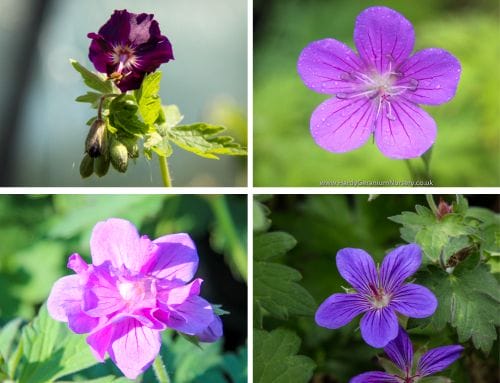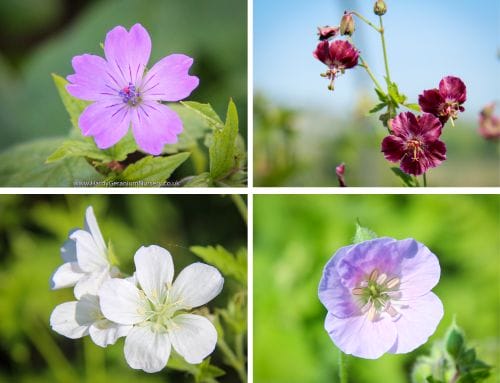I’m sure you all know that not all plants that we grow here in the UK originated here. People known as Plant Hunters have been bringing plants back to the UK for hundreds of years, reaching a peak in Victorian times. Those plants that do not originate here, plants that have been brought back from other countries are classed as non-native and can become invasive. Sometimes the introduction of non-native plants to our country can have disastrous effects. They can adapt so well to our climate and environment that they take over, outcompeting our native plants. Take a look at Japanese knotweed for example, https://www.rhs.org.uk/advice/profile?pid=218 , a plant that spreads rapidly and can cause very real damage to the point of affecting house buying and selling if you have it in your garden. Fortunately, while many of the Geraniums we grow today are non-native they are nowhere near as invasive and are very easy to control if they get out of hand.
Our native UK Geraniums are the Meadow Cranesbill (Geranium pratense), the Bloody Cranesbill (Geranium sanguineum) and Herb Robert (Geranium robertianum). The meadow cranesbill is, as the name suggests, naturally found in meadows and verges that haven’t been grazed or mown, adding colour and interest to grasses in late summer. The Bloody Cranesbill is so named due to its startling bright red (magenta) flowers and would naturally be found in coastal sand dunes. Herb Robert is, like all other Geraniums, very adaptable and this one is often considered a weed, popping up just where you don’t want it.
Most of all other geranium species that we are familiar with have originated in other countries and have been brought back to the UK where, providing they are situated correctly for their species needs, they will thrive. Some will need extra protection in the winter such as G. maderense and G. canariense (syn. G. reuteri) as they come from warmer climates, Madeira and The Canaries respectively. You will also find that the cinereum and subcaulescens species, classed as alpines, will not appreciate being in a wet situation throughout winter.
Here in the UK our climate seems to suit Hardy Geraniums very well. New cultivars are often developed here, making them natives I suppose, and they all thrive in our gardens all through the year and more importantly, surviving our winters that seem to vacillate between prolonged blasts of arctic cold or biblical proportions of wet.




